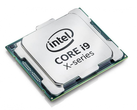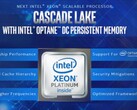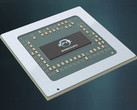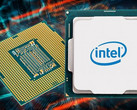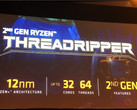At this year's Hot Chips conference Intel delivered a presentation on its Cascade Lake architecture, which is set to launch this year. Although only lasting 30 minutes, Intel's presentation gave very useful information in the way of patching exploits, process improvements, and Optane. Intel promises hardware level patches for Meltdown, Spectre, and other exploits, "process tuning, frequency push, targeted performance improvements," and 3840 GB of Optane memory per socket.
One of the most interesting topics of discussion is that Intel is working on mitigating Spectre and Meltdown on a hardware level; recently, Qualcomm based CPUs were shown to also be vulnerable to such exploits. However, the company won't be patching all variants, only 2, 3, and 5, meaning 1, 3a, and 4 will still rely on OS and firmware level protection. We can expect some performance loss due to these mitigations, but nothing earth shattering. It has not even been a year since Meltdown and Spectre were made public, so it is very encouraging to see Intel begin to patch these exploits on a hardware level in a very short amount of time.
Also of note was a small line that spoke of process and performance improvements. This means Intel could be improving on 14nm in a way that will significantly (around 10-15% perhaps) improve power consumption or clocks speeds in some capacity. Intel also talked about how AVX-512 VNNI would be added to Cascade Lake for additional deep learning capabilities.
Finally, Intel ended the presentation on Optane, which is now shipping. Intel confirmed that each Cascade Lake socket will support up to 3840 GB of Optane memory, which is persistent and will continue to store data after power is cut off. While Optane is not as fast as traditional DDR, it definitely has uses that DRR cannot fulfill, such as restoring operations quickly after a power outage.
Overall, Cascade Lake seems more like evolution rather than revolution. Nothing Intel has revealed so far has jumped out as majorly changing performance. Core counts are currently unknown but it is likely to be the same as it's predecessor Purley Lake. Intel's biggest competitor currently is AMD's Epyc, which AMD CEO Lisa Su claims will hit 5% marketshare by the end of the year and double digit marketshare with Epyc 2 in 2019. Without bigger changes under the hood, it's hard to say if Cascade Lake will be enough to push Epyc back.





